Described as a premium step-up from the Grand Creta, the Alcazar improves significantly in many areas, while keeping the favoured turbodiesel engine.
Although an unfamiliar name to South Africa with seemingly no connotations bar, somewhat humorously, the character of the same name in the Tintin comics, the Hyundai Alcazar is anything but new as it has been sold locally since 2022, albeit under a different name.
What’s in a name?
Unveiled four years ago in India as a three-row version of the Creta, Hyundai South Africa’s decision to align it with its sibling, produced at the same plant in Chennai, resulted in it being badged Grand Creta rather than sticking with a name local buyers might have taken a giggle to.
With souring of the Creta having moved to the Cikarang facility in Indonesia three years ago though, the aligning strategy no longer applied as the pending first lifecycle update made it seem fit to drop the Grand Creta moniker and revert to Alcazar for the local market.
NOW READ: Hyundai Alcazar officially priced as ‘facelift’ Grand Creta
A move defined further by Hyundai as representing a step-up on the Grand Creta, despite it being a facelift, the arrival of what is still Hyundai’s most affordable seven-seater in South Africa for the weeklong test promised much on the back of its predecessor’s popularity, and main selling point, it’s turbodiesel engine.
Decked-out in the same Titan Grey Matte hue as the now discontinued limited run Creta Matte Edition, the test unit not only sported the 1.5-litre oil-burner underneath its bonnet, but also happened to be the flagship Elite priced at R669 900.
Will be seen as new
Sitting atop a range reduced to three models from the Grand Creta’s five, the Elite’s main exterior difference from the step-down Executive – which continues to the offered with the normally aspirated 2.0-litre petrol engine as the base model – involves the new 18-inch diamond-cut alloy wheels compared to the former pair’s 17-inches.
Besides this, and viewed on first glance, the facelift touches can, in fact, be disputed as being representative of a new generational model as, aside from the side profile, the Alcazar shares very little else with the Grand Creta.
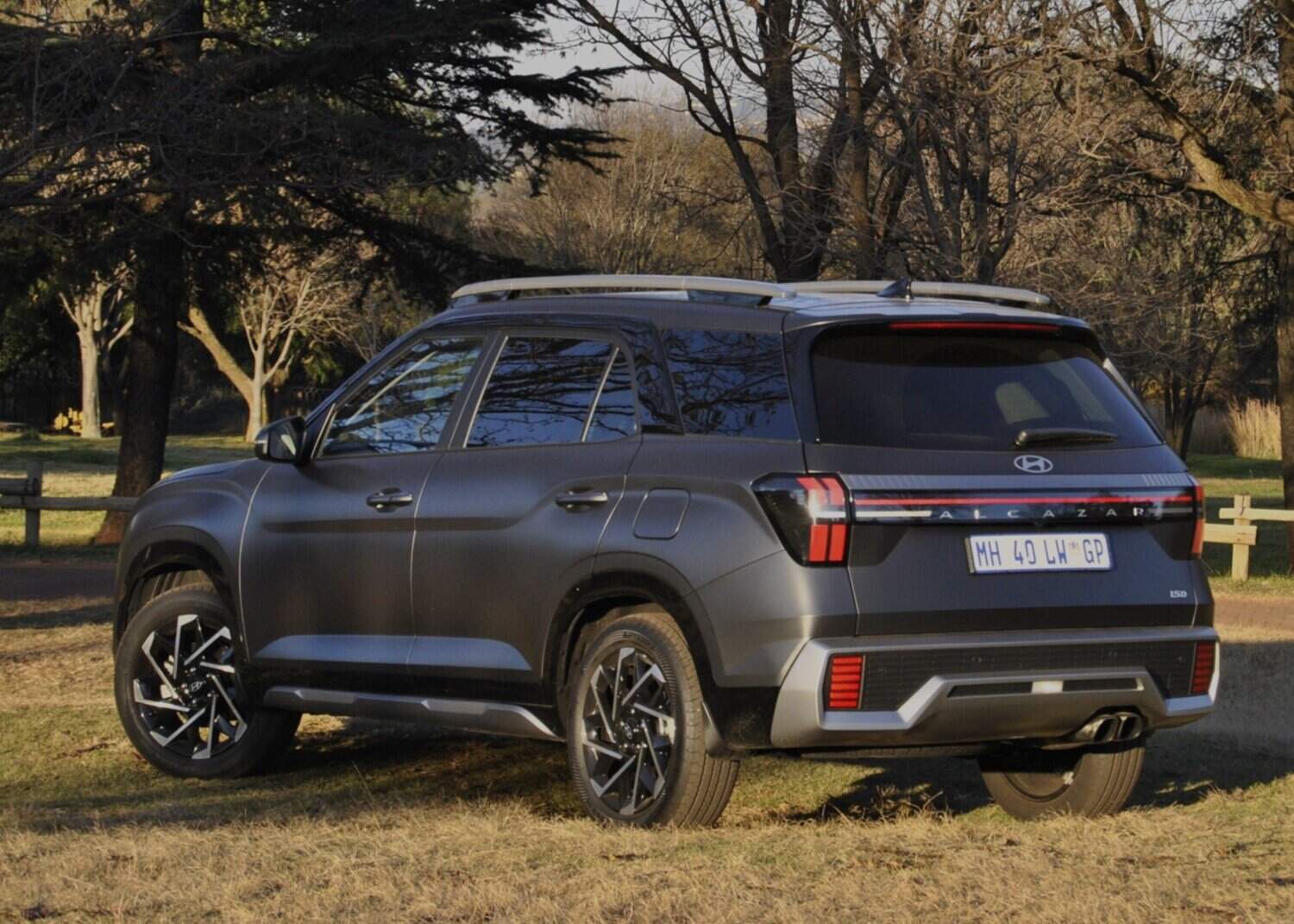

Central to this is a new bonnet, a sealed upper grille, the same H-shaped LED headlight clusters from the Exter connected by a central light bar, wider wheel arches and a new front bumper that houses a now lower-mounted rectangular main grille, plus a satin silver imitation skidplate.
Not stopping there, the Alcazar’s restyled rear facia gets a new bumper and integrated skidplate, H-shaped light clusters, also connected by a horizontal LED light bar complete with a block letter name logo, a new tailgate and stacked light reflectors on the flanks of the bumper.
Rounded off with satin silver roof rails, the Alcazar, arguably, appears better looking, more distinctive and stylish, and more premium compared to the somewhat bulbous and even divisive Grand Creta.
Interior redesign makes the cut
Just as extensive, Hyundai has renewed the Alcazar’s interior, albeit with the omittance of the pair of 10.25-inch displays for the infotainment system and digital instrument cluster available in India.
Instead, all models receive a reworked version of the Grand Creta’s instrument cluster and the older eight-inch infotainment display, now equipped with wireless Apple CarPlay and Android Auto for the first time.
Housed within the same ‘one-piece’ binnacle, the design feels and looks decidedly more modern than in the Grand Creta, bolstered by the latter’s ease of use and physical shortcut buttons on either side.
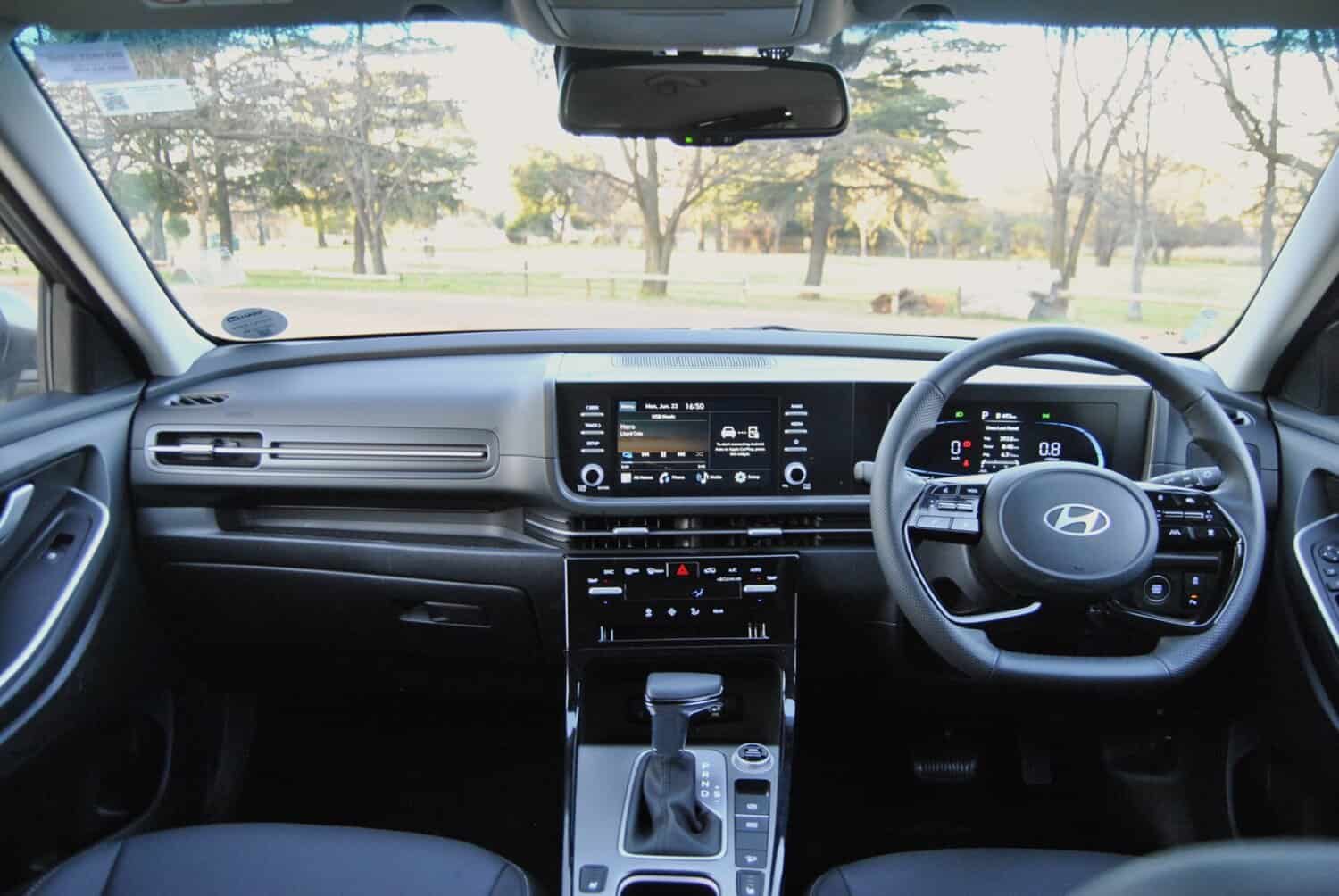

In addition to the new air vents and a storage shelf above glovebox, the centre console has been updated to now include an Audi-style LCD panel for the dual-zone climate control, replete with physical toggle switches and touch-sensitive icons.
Although finished in anything but practical piano-key black, the initial concern of the setup being more form than function proved unfounded as it works seamlessly while being intuitive and not frustrating.
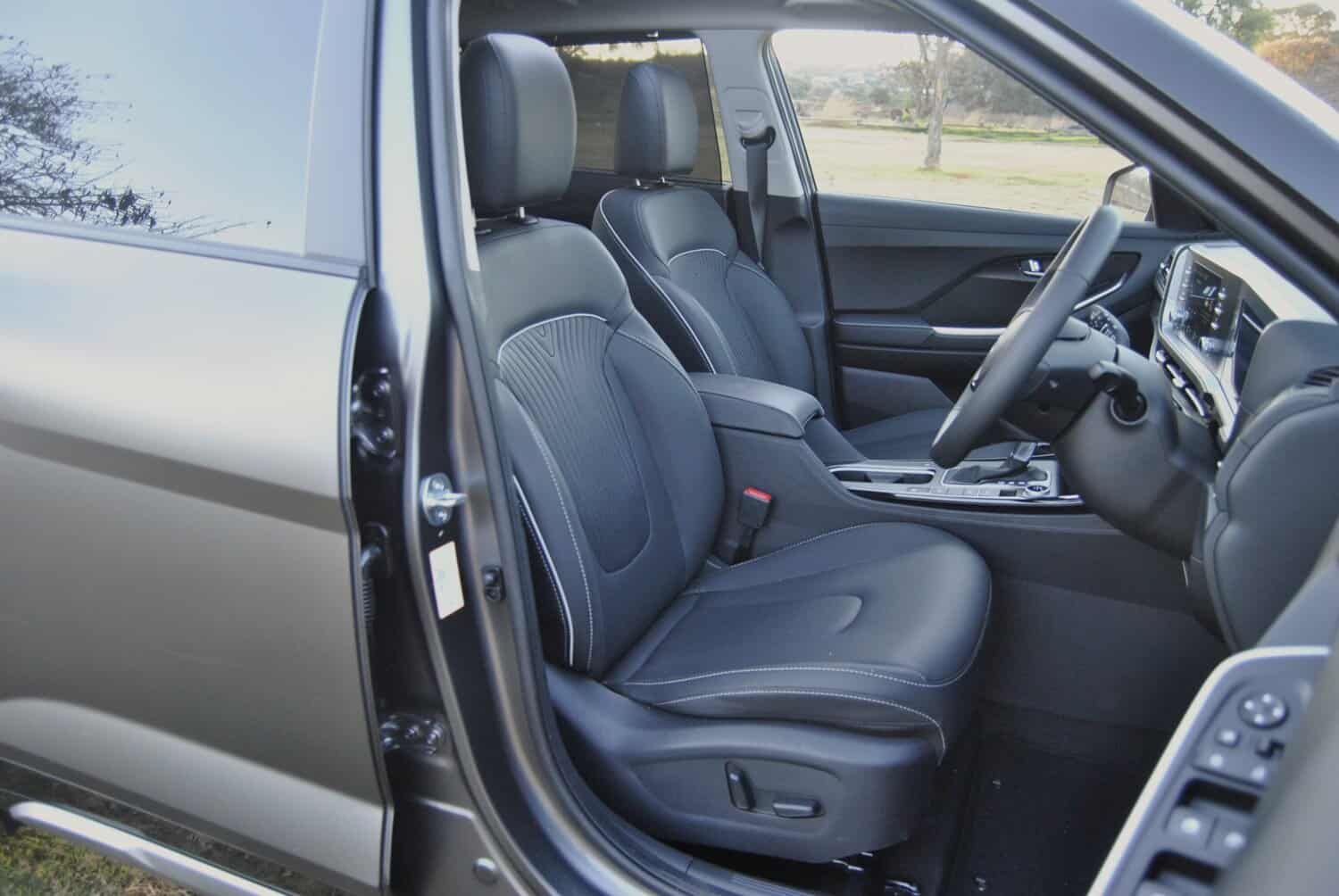

While neat and ergonomically sound, interior quality felt on the cheap side in places. What’s more, the electric driver’s seat doesn’t drop low enough to accommodate taller folk, while the quality of the sound system undelivered when taking the Elite’s price into consideration.
More accomplished are the soft and supportive imitation leather seats, the functionality of the multi-function steering wheel and straight-forward buttons for the electronic handbrake, Hill Descent Control, Auto Hold and ventilated front seats on the centre console.
Practicality and spec
Practically-wise, the Alcazar also impresses as, apart from head-and-legroom leaving little to be desired – the former even with the standard panoramic glass roof – the second row sports a pair of fold-out tables integrated into the backs of the front seats.
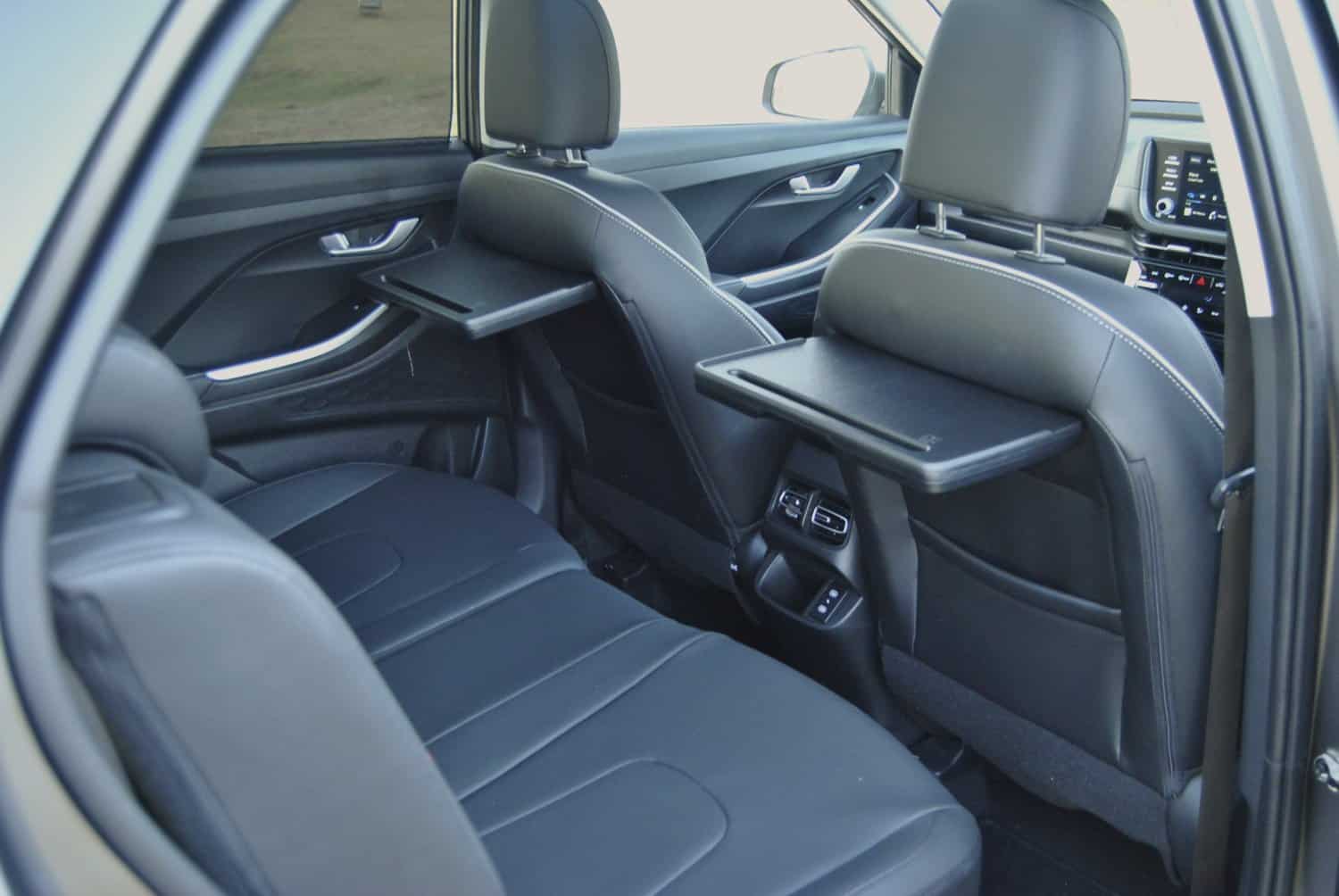

Despite its seven seats, the third row is exclusive to children, however, entry is made easy by the second row “tumbling forward” than simply sliding.
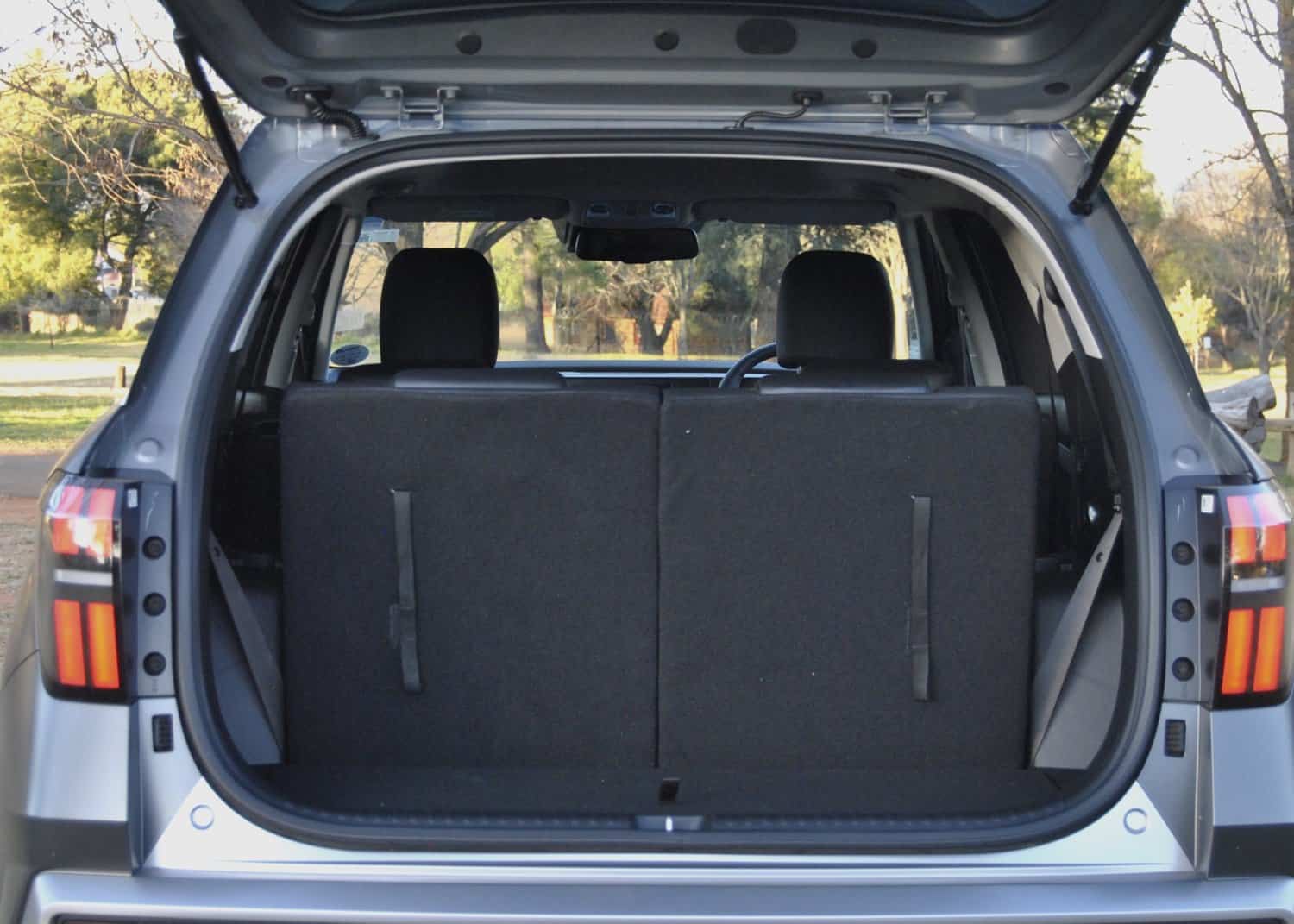

In terms of space, the boot accommodates 180-litres with all seven seats up, which increases to 579-litres in five-seat guise. With the middle row also down, total utility space measures 1 670-litres.
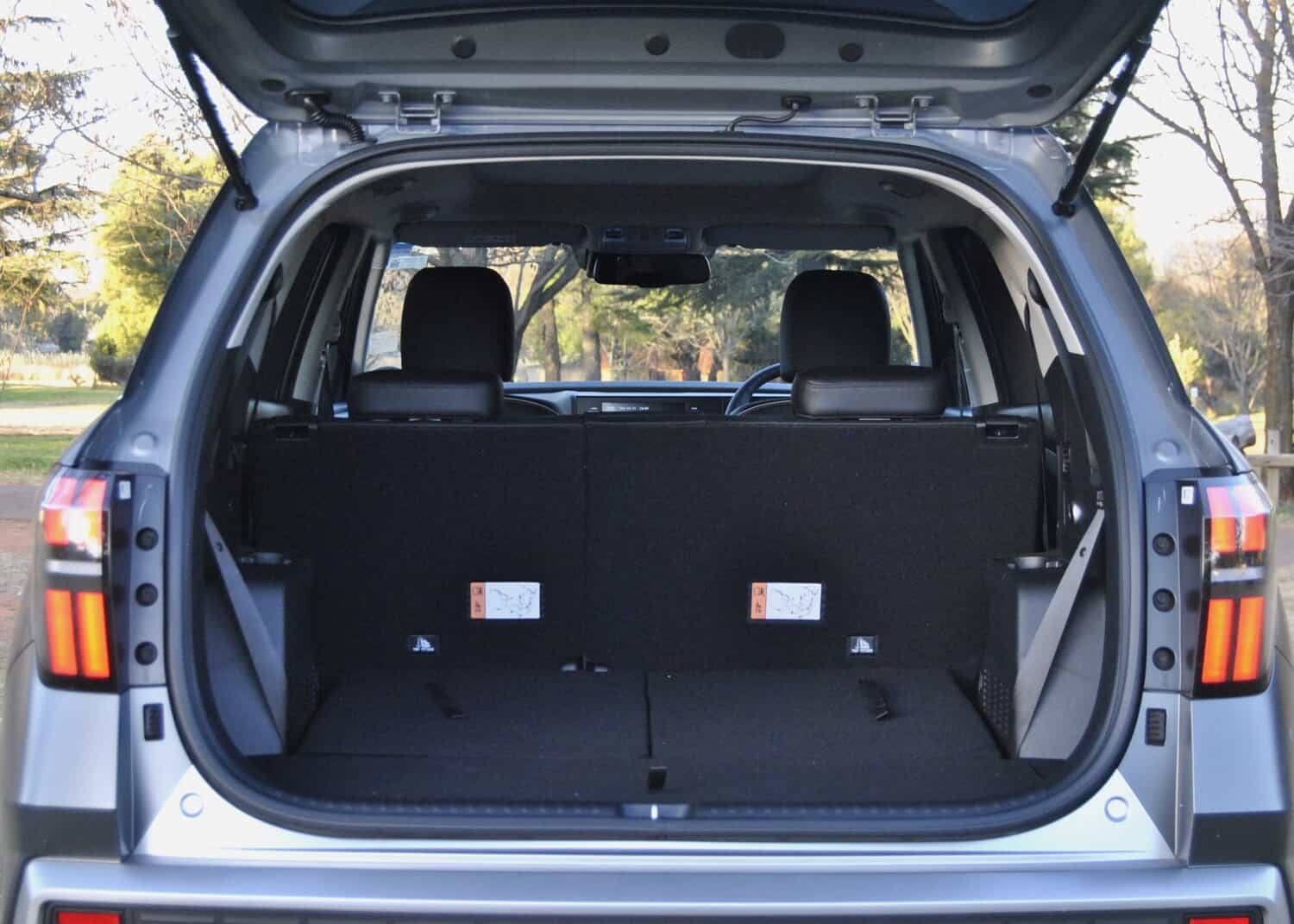

Besides the features already mentioned, along with the peculiarity of only ventilated seats, the Alcazar Elite comes standard with rear window blinds, keyless entry plus push-button start, USB ports in each row, a wireless smartphone charger, folding electric mirrors and ambient lighting.
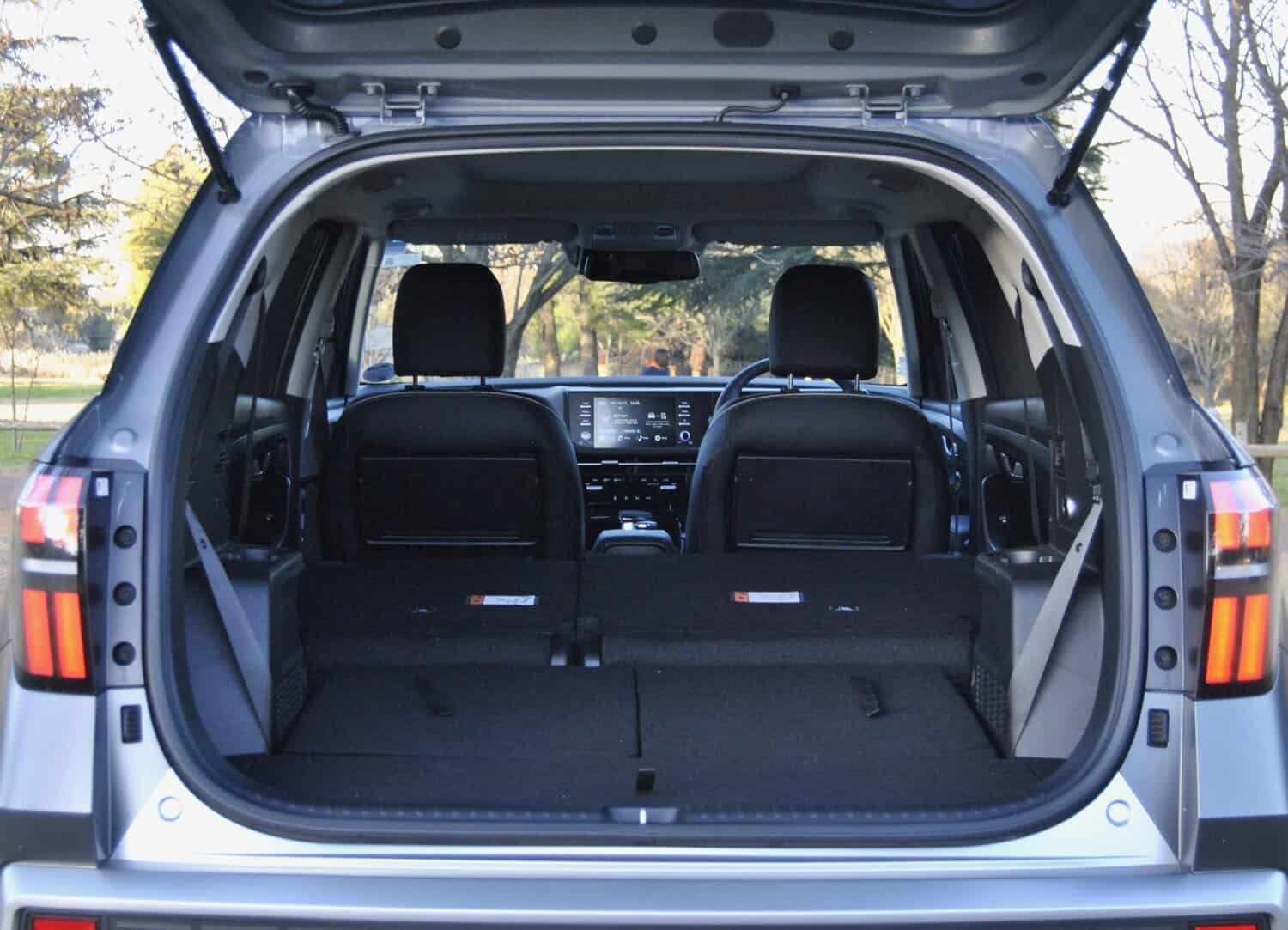

Safety and driver assistance come in the form of a tyre pressure monitor, rear parking sensors, a somewhat underwhelming reverse camera, Adaptive Cruise Control, Blind Spot Monitoring, Driver Attention Alert, Lane Keep Assist, Rear Cross Traffic Alert, Forward Collision Avoidance Assist and Lane Follow Assist.
The diesel factor
As much as it had been the selling point of the Grand Creta in a largely petrol-powered and ever growing hybrid end of the market, the 1.5-litre turbodiesel engine isn’t most refined nor the quietest available.
Tasked with moving 1 445 kg of unladen Alcazar, the engine’s 84kW/250Nm makes for a slightly underpowered feel similar to the Indian made Creta tested four years ago.
Slightly overcoming its breathlessness as the revs climb, a fair amount of engine noise still creeps into the cabin at speed, while the six-speed automatic gearbox goes about its business in a relatively slick manner.
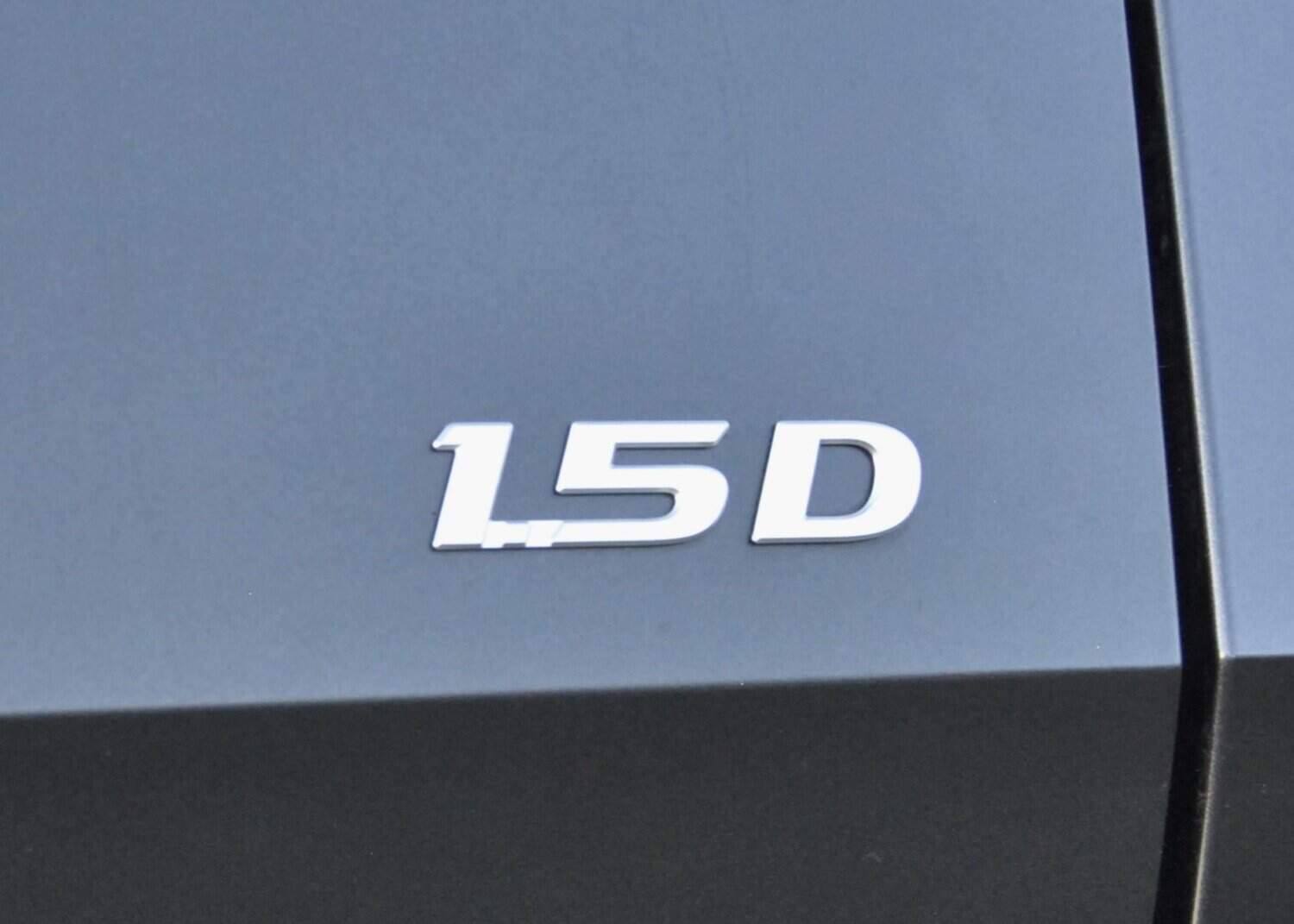

As with the Grand Creta, the Alcazar’s amount of twist goes to the front wheels only, though it does offer a Terrain mode selector with three settings; Snow, Mud and Sand.
On top of this, the conventional drive mode system comes with three settings of its own; Eco, Normal, Sport, the former never being engaged, and the latter seldom as the admittedly sharper throttle response sees the revs climbing too high, resulting in a terribly strained sounding diesel clatter.
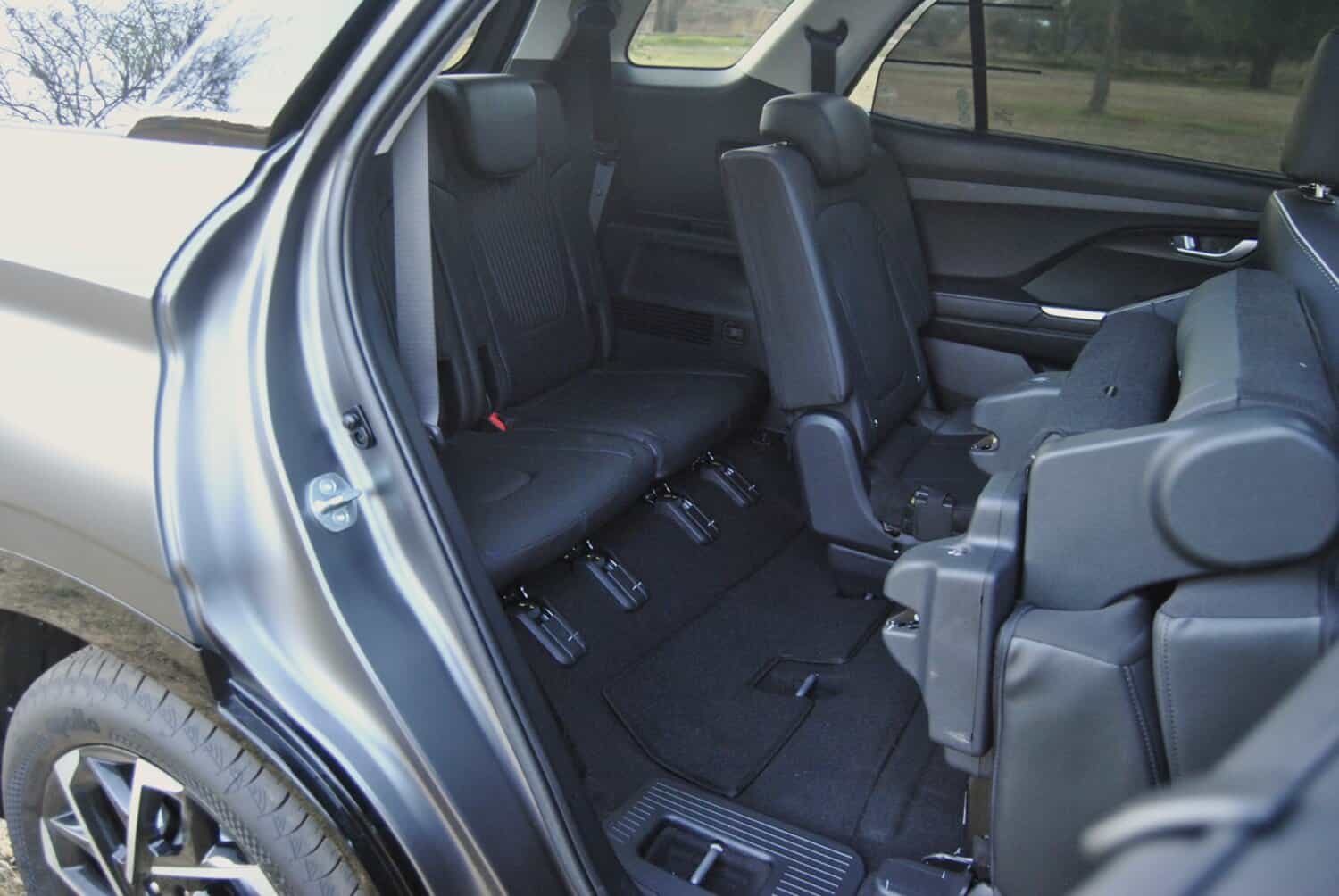

Equally prone to spinning all of the power away without going faster in Sport, Normal was selected throughout the Alcazar’s seven days and eventual 409 km.
On the move, and despite the intrusive engine noise, the slightly firm ride still feels acceptable as the suspension dampens imperfections well without sending shudders or other aftereffects throughout the cabin.
Unsurprisingly, the Alcazar’s main selling point delivered with an indicated best consumption figure of 5.9 L/100 km at the completion of its stay.
Conclusion
While not without its detractions, some disappointing considering its supposed step-up from the Grand Creta, the Hyundai Alcazar still warrants being a worthwhile improvement both aesthetically and to some extent, internally.
Practical and an overall solid product that does what it says on the tin without doing anything spectacularly good or bad, it still comes across as pricey against not only its immediate legacy brand rivals, but also the ever growing number of comparative Chinese products.
That being said, it is still worth a second look and given South Africa’s still burning love for diesel and top-spec model variants, yet another likely success story in pending for the Korean brand.
NOW READ: Hyundai Alcazar has an ace up its sleeve against Chinese SUVs
